Versatile high-end notebook
with high endurance
The TUXEDO Stellaris 15 appears like a gaming notebook from another planet:
While high-end gaming laptops have long been considered heavy, thick and immobile with very short battery runtimes, the Stellaris 15 heralds a new era and integrates the fastest notebook graphics card on the market, the NVIDIA GeForce RTX 3080 (TGP up to 165 watts) into an amazingly compact aluminum chassis.
In addition, it features the fastest high-end mobile processors, like the brand new Intel Core i7-11800H and the Ryzen 9 5900HX, and an optomechanical keyboard that convinces gamers as well as frequent typists with a desktop-like typing feel.
The huge 93 Wh lithium-polymer battery and the high-resolution 3K WQHD display with 2560 x 1440 pixels highlight the great mobility factor and qualify the Stellaris 15 as a mobile high-end gamer and high-performance workstation in equal measure.
Maximum graphics performance
thanks to maximum TGP
The 15-inch device offers almost interstellar high-end equipment in terms of graphics performance:
With the NVIDIA GeForce RTX 3080 in the highest TGP configuration with up to 165 watts (incl. Dynamic Boost) and a whopping 16 GB GDDR6 graphics memory, the TUXEDO Stellaris 15 is currently one of the fastest gaming notebooks on the market!
With a TGP of 125 watts and 115 watts respectively plus up to 15 watts Dynamic Boost, the TUXEDO Stellaris 15 also integrates NVIDIA's fully specified performance for either the configurable GeForce RTX 3070 (8 GB) and the GeForce RTX 3060 (6 GB).
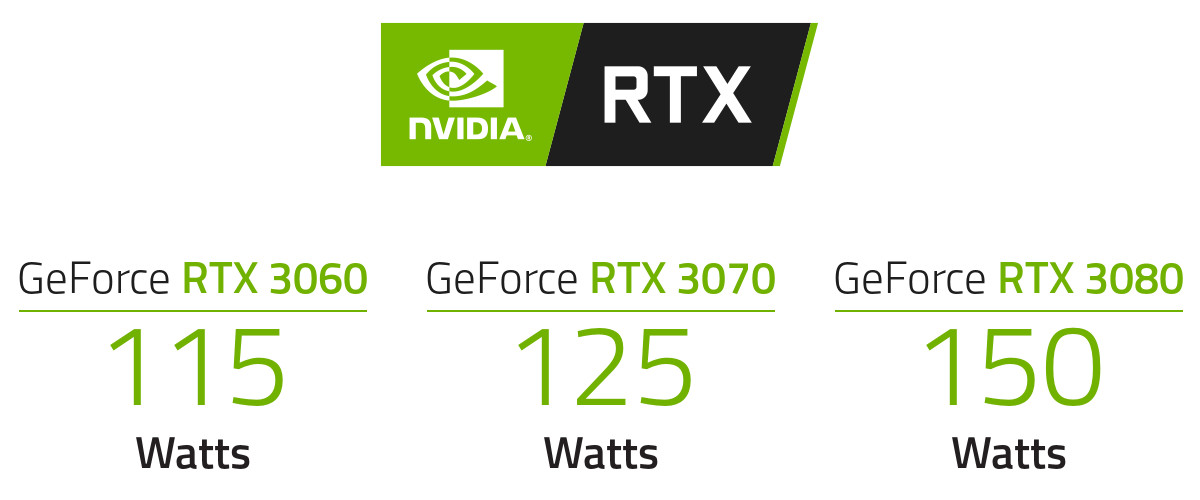
AMD Ryzen vs Intel Tiger Lake:
The Agony of Choice
The TUXEDO Stellaris 15 presents the customer with a difficult choice: Intel Core i7-11800H or the Ryzen 9 5900HX? Which one will you choose?
AMD's Ryzen processors have shaken up the Intel-dominated CPU market during the last years. The current Ryzen 5000H generation also offers outstanding efficiency and performance that is equally suitable for content creation and gaming.
However, tough competition has also emerged from Intel with the new Tiger Lake H45 processors, which are nearly on par with AMD's Ryzen 5000H processors in terms of performance and energy efficiency.
AMD's Ryzen 9 5900HX as well as Intel's Core i7-11800H each have 8 cores that can handle up to 16 threads simultaneously via virtual task sharing and work with a specified power consumption of 45 watts, which can sometimes be exceeded significantly in favor of increased performance thanks to the Stellaris 15's powerful cooling system.
Two high-end CPUs, but only one free slot:
You have the Agony of Choice.

Optimal balance of mobility
and high cooling capacity
Made primarily of matted black aluminum, the TUXEDO Stellaris 15's chassis strikes the ideal balance of powerful cooling and a nevertheless compact and still mobile form factor thanks to a z-height of 26 mm.
In addition to the necessary height for the optomechanical keyboard with extra long key travel, the Stellaris 15's chassis also allows for the implementation of higher fans and heatsinks than typical thin-and-light gaming notebooks.
The result? A more powerful cooling system with a still very portable weight of only 2.2 kg as well as a robust and elegant chassis that allows using the Linux gaming notebook in the office, meeting or lecture hall without any problems.
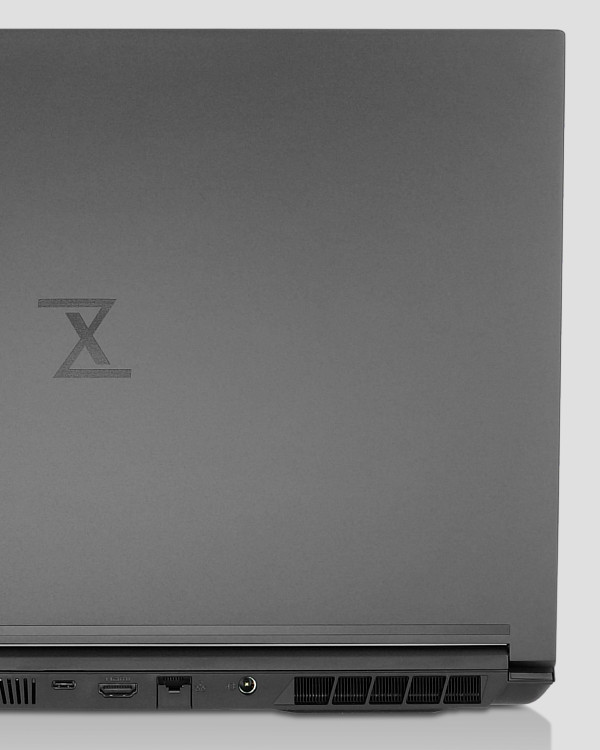

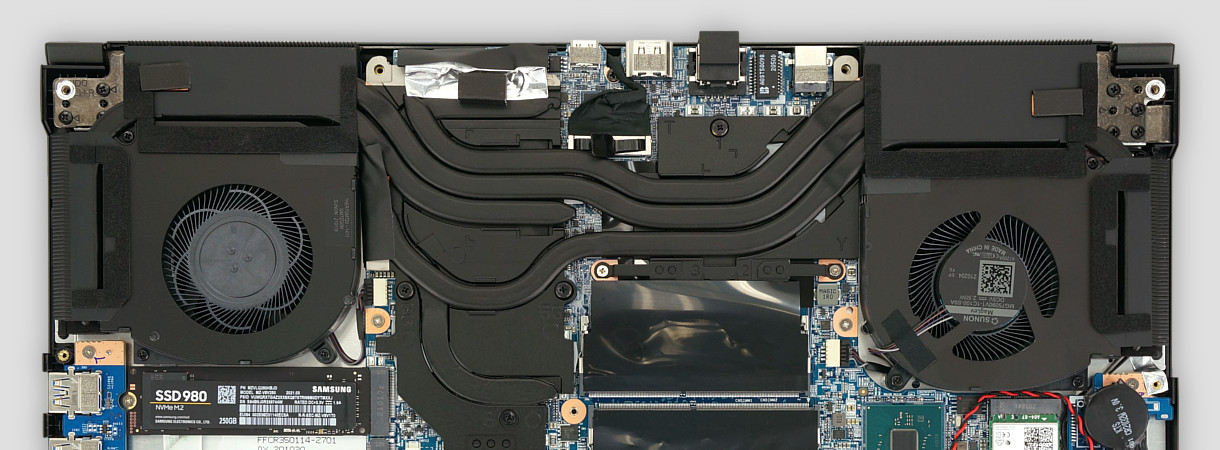
Optomechanical keyboard for
desktop-like typing experience
To meet the wishes of many gamers, but also frequent typists, the TUXEDO Stellaris 15 relies on an optomechanical keyboard with an extra-long 3 mm key travel and a typing behavior modeled after desktop keyboards.
The special tactile switches ensure that the audible triggering noise of the keys is relatively quiet. Therefore, the Stellaris combines crisp keystrokes with moderate typing noise. N-key rollover, anti-ghosting as well as single key illumination and last but not least the TUX Super key are further advantages of the Stellaris 15's optomechanical keyboard.
The 115 x 73 mm Glass ClickPad with integrated mouse buttons convinces with pleasant gliding properties and can be deactivated if necessary to prevent unintentional typing errors.
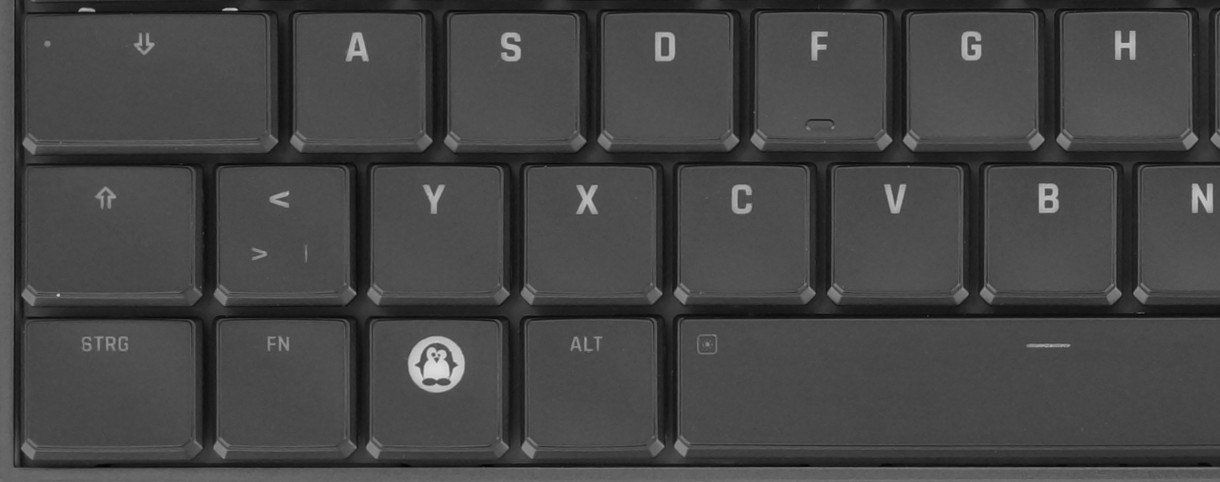
165 Hz fast WQHD IPS Display
After the TUXEDO Polaris 15, the new Stellaris 15 also follows the trend of high-resolution WQHD displays with 2,560 x 1,440 pixels. Due to the high refresh rate of 165 Hz and the fast hardware, the viewing-angle stable IPS panel is perfectly suited for high-resolution gaming.
The new WQHD display's significantly sharper resolution compared to Full HD shows its strengths especially in everyday use: Fonts, high-resolution photos or graphics look very sharp-edged and rich in detail, and texts are comfortably legible even in small font sizes without straining the eyes.
Combined with the near full sRGB color gamut, the high resolution of the WQHD display also offers advantages for content creators and their use of creative software, such as for video or image editing.
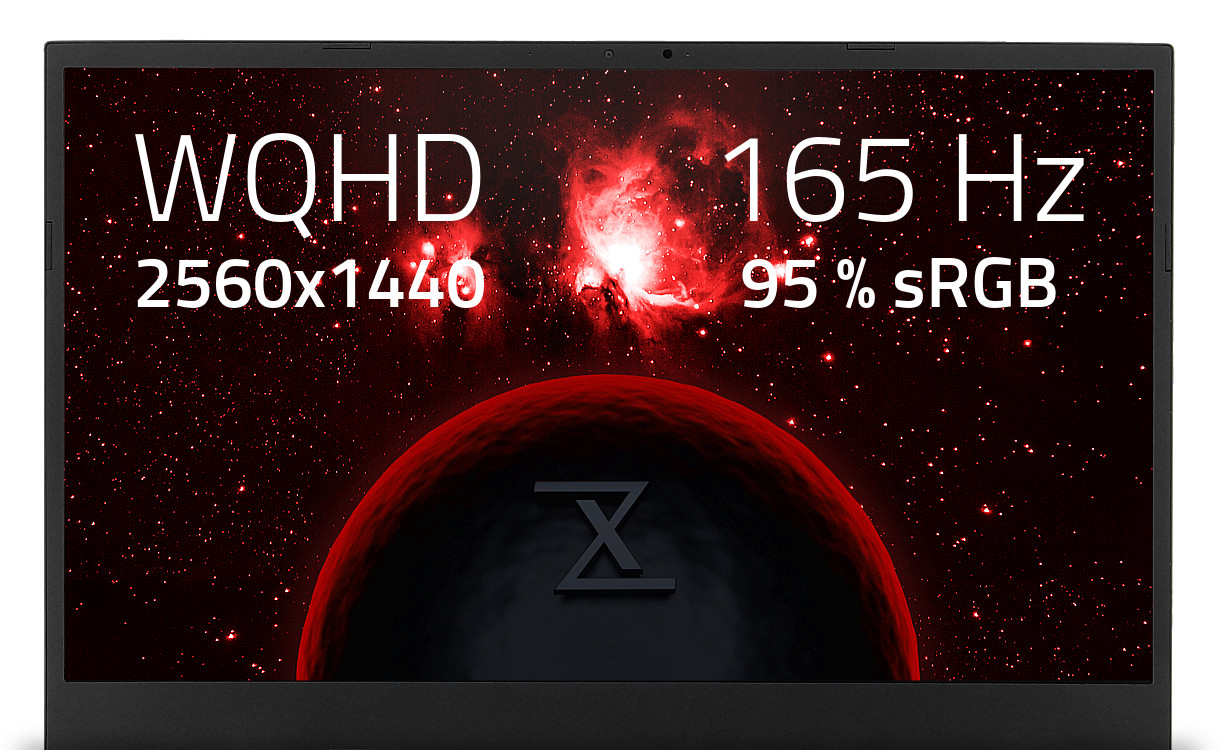
Long battery runtimes thanks to 93 Wh battery
The mobile Linux workstation also cuts an athletic figure away from the power socket: While runtimes of 3-4 hours were standard in earlier gaming notebooks, the Stellaris 15 doubles this value!
Thanks to the internally screwed lithium-polymer battery with a very large 93 Wh capacity, the TUXEDO Stellaris can ideally last almost a full workday (8 hours). With various office tasks running, active WiFi and medium screen brightness (~150 cd/m2), the mobile desktop replacement thirsts for the powerful 230 watts power supply after about 6 hours.
This is helped not least by the automatic graphics switching, which deactivates the NVIDIA GPU during low computing loads and executes simple graphics calculations on the graphics unit integrated in the main processor instead.
Versatile connection equipment
The connectivity of the TUXEDO Stellaris 15 leaves nothing to be desired: The universal premium interface Thunderbolt 4 (only with Intel CPU) integrates highest data speeds and offers the connection option for up to two 4K monitors via the included DisplayPort signal.
The Stellaris 15 with AMD Ryzen 9 5900HX uses a fast USB-C 3.2 Gen2 port with an integrated DisplayPort signal instead of Thunderbolt. Together with HDMI 2.1, 3x external monitors can be connected to the Linux gaming notebook.
On the data side, the Thunderbolt 4 / USB-C 3.2 Gen 2 port is joined by 3x additional USB Type A ports and a full size card reader (SD/SDHC/SDXC). The connectivity is completed by ports for headphone output, microphone input and the obligatory RJ 45 LAN port.

From left to right: Kensington Lock, USB-A 3.2 Gen2, microphone in, headphone out

From left to right: USB-C (Intel: Thunderbolt 4 | AMD: 3.2 Gen2), HDMI 2.1, Gigabit Ethernet, power connector

From left to right: SD memory card reader, 2x USB-A 3.2 Gen1
We are personally there for you Monday to Friday from 9 am to 1 pm and from 2 pm to 5 pm (German time). But also outside these times, you can contact our team with your request by e-mail. You will receive confirmation of receipt within approximately 15 minutes. If not, please feel free to contact us by phone. Please include your order number, the model name of your laptop or PC and as detailed a description of your request as possible. The more details you give us, the faster we can process your request!

